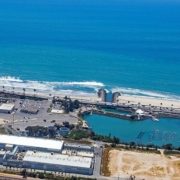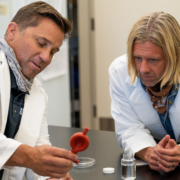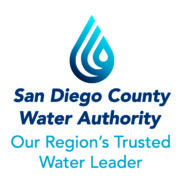Credit Agencies Cite Water Authority Diversification, Reliability for Strong Ratings
The three major U.S. rating agencies reported strong credit ratings and credit quality for the San Diego County Water Authority kicking off 2022. Newly released analysis by Fitch Ratings, S&P Global, and Moody’s allow the Water Authority to optimize its debt portfolio and minimize the cost of financing vital water reliability projects.
The ratings reports were issued Jan. 27 in anticipation of Water Authority plans to sell $170 million of bonds the week of Feb. 7. Proceeds will be used to finance a portion of the design, acquisition, and construction of various capital projects.
Strong credit ratings
All three rating agencies highlighted the strength of the Water Authority’s significant investments in supply diversification, which allow the agency to meet demands in its service area despite ongoing drought conditions. The Water Authority’s credit quality is deemed strong, in part because the agency adopted its Long-Range Financing Plan in 2021. S&P said, “the LRFP reflects strong management of the authority’s financial and capital needs balanced with long-term affordability for its member agencies.”
Water Authority General Manager Sandra L. Kerl said, “These credit ratings reflect the importance of the Water Authority’s successful effort to diversify the San Diego region’s water supply portfolio combined with strategic financial practices. Consistent investments are protecting the region’s ratepayers from persistent drought conditions while maintaining a safe and affordable water supply.”
Financial leadership, diversified water supply sources
In affirming their credit ratings, the services cited the Water Authority’s financial leadership, including prudent strategies to manage issues related to COVID-19, its success diversifying water supply sources, its commitment to infrastructure maintenance, and its financial reserves for managing contingencies, among other factors.
- Fitch Ratings affirmed its AA+ rating and gave a stable outlook. Fitch cited the Water Authority’s “strong purchaser credit quality” and “very low” operating costs, as well as a moderate life cycle ratio “reflecting sustained capital investment.” Fitch noted the Water Authority is through the peak of its capital program but retains price risks related to factors such as costs of future water infrastructure investments.
- S&P Global Ratings revised its long-term outlook to stable from negative for the Water Authority. At the same time, S&P Global Ratings assigned its AAA long-term rating to the agency’s anticipated $170 million series 2022A water revenue bonds. S&P Global noted Water Authority management has “demonstrated an ability to navigate volatile hydrological cycles through adopting rate increases as needed and building prudent financial reserves and storage to mitigate variability.”
- Moody’s Investors Service reaffirmed its Aa2 rating and stable outlook. Moody’s said, “The stable outlook reflects the likelihood that the Authority’s satisfactory operating performance will remain stable, supported by strong management practices despite challenges associated with ongoing drought conditions, rising costs, and required capital investments.”
Significant projects completed over the past two decades include the San Vicente Dam Raise, Olivenhain Dam, and Twin Oaks Valley Water Treatment Plant. The Carlsbad Desalination Plant has also been completed as a joint project of the Water Authority and Poseidon Water.
To read the most recent rating agency reports for the Water Authority, go to www.sdcwa.org/wp-content/uploads/2022/01/Credit-Rating-Reports-2022.pdf.
(Editor’s Note: All three rating agencies cited ongoing uncertainty resulting from two member agencies’ applications to detach from the Water Authority. Moody’s said detachment could lead to a credit downgrade, which would increase borrowing costs for critical water reliability projects. S&P Global said detachment could challenge affordability and create long-term political risk for the agency, especially if the process sets a precedent that “members can easily detach from the authority.” Information about detachment is at www.sdcwa.org/member-agencies/lafco-reorganization/.)






